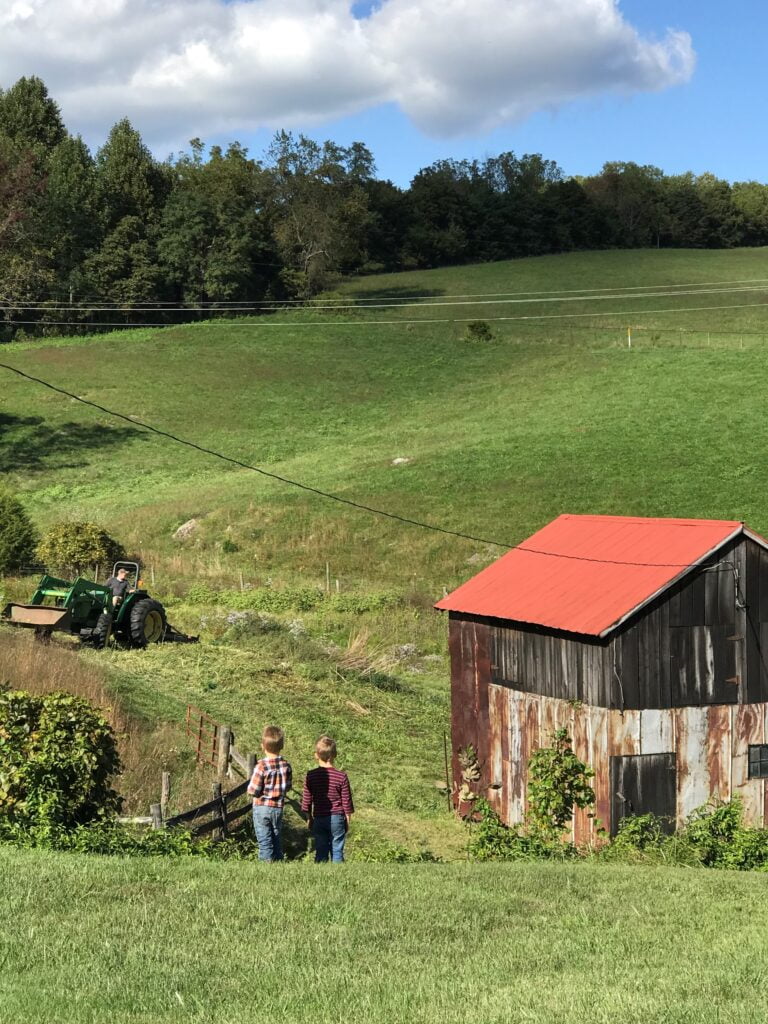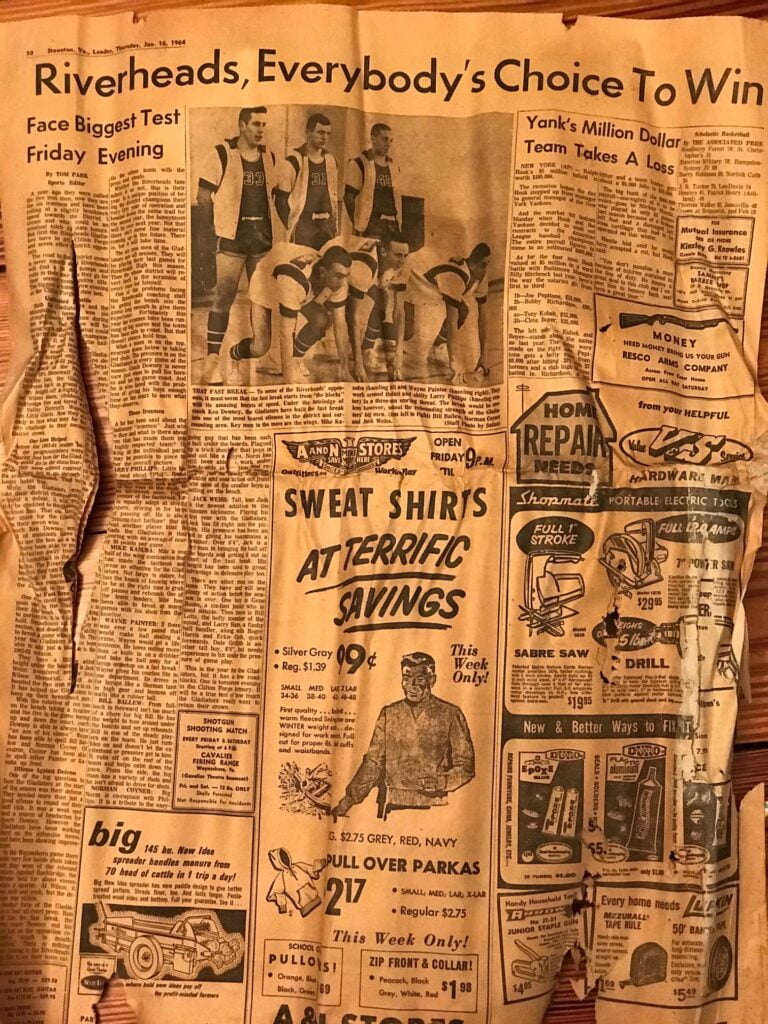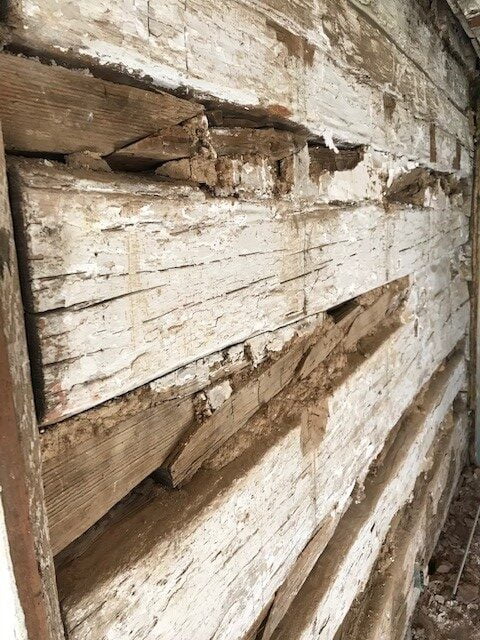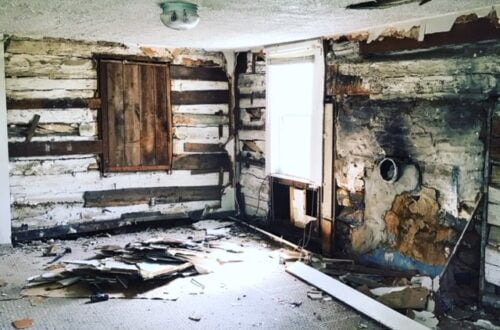
Restoring What Was Once Lost
Our new home was built in 1900. The little farm house sits on a little knoll overlooking the mountains, hay fields, and pastures not far from the little village of Fairfield. The property is split in half by a little one lane road giving us hay fields on both sides. The property is dotted with little barns and outbuildings that have been constructed over the years to increase storage for the small 1200 square foot home’s residents. There’s even an old canning shed that I am sure was once full to the brim with delicious canned goods from the garden to keep the family through the cold winter months.

My husband and I have lived beside this property for almost 7 years now and have often talked about how much we loved the fields and views. The mountains that seem to encase the valley and the rolling fields are the perfect backdrop to this little farm house. If you want to learn more about how we came to be Hackett Hill Farm, check out more of our story here.
With the wonderfully long history of this home I had some great expectations of what hidden secrets this home may hold within its walls. Visions of lost family heirlooms, photos, and antiquated newspapers telling stories of yesteryear invaded my imagination before demolition even began. When we started tearing into the walls reality set in and what we ran into instead was a lot of mice nests and the occasional news paper scrap that was anything but enlightening of the contents it once held.

While most of the newspapers we have found so far have been shredded, I did happen across one nearly fully intact 1964 newspaper shoved under the staircasing that I was really excited about. In January of 1964 the headlines read that Riverheads were the choice to win, it was a going to be a dry year for farmers, and I could buy a sweatshirt for only 99 cents!
I think it is so interesting to see all of the old ads and what was going on in our small section of world almost 60 years ago. Not only do these little treasures give us a glimpse into life in the past, but also when additions may have been added onto our sweet home.

When we first started this home renovation, our goal was to save and reuse everything that we could. Not only to save us money, but to maintain the charm of the home as well as create a more environmentally friendly home project. With this in mind, we have moved slowly through the renovation process, my husband painstakingly taking down board by board of tongue and groove from the ceilings and the walls. We have saved every piece of trim and plan to refinish the existing wood plank floors where possible. As we move through the project I will be sure to include updates on how and where we reuse this original wood
But perhaps my favorite discovery and one that will be the biggest reuse of existing material was one that I should have anticipated prior to even buying the home. Peeling away the layers of sheetrock revealed the most stunning original hand hewn logs. At first glance they stole my heart and upon finding them, I immediately began changing my original plans of an open concept floor plan to ensure that these logs would be a main focal point of our home. Given that the home was built in 1900 and that the foundation is still supported by original wood posts and rock, I guess I should have suspected as much. But not until we peeled back the layers did it really sink in that this home was once a log cabin!

In the early 1900s and before, log cabins were oftentimes the go to structure. The earliest log cabins in America date back to the early 1600s! These simple structures could be easily assembled by only one man in just a few short weeks. These small square log homes were typically one room with a loft for additional sleeping room. The logs were often pulled from the land during cleaning and the chinking would be made up of a combination of materials including horse or goat hair. The relatively easy and quick construction, utilizing materials already available on the land, made these homes an attractive option for early farmers and immigrants.
The sheer amount of history these old logs hold make me love this house so much more. I am so excited to see these hand hewn beams come back to life with a good sanding to remove the years of glue and plaster as well as newly updated chinking and a good coat of sealant. As we move into that project I will be sure to include you in the step by step process. It is hands down one of my favorite features of the property. I cannot wait to see how these logs come to life in our new home.



One Comment
Keep+Calm+&+Drink+Coffee
This is all absolutely enchanting. Restoring a 1900 house is also a cultural contribution! But most of all I fell in love with the way you describe it: you are giving life again through your enthusiasm!
Sincere congratulations!